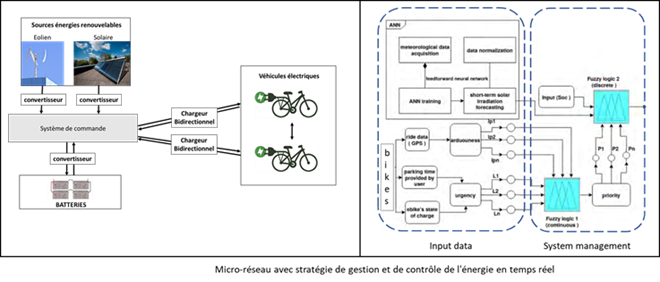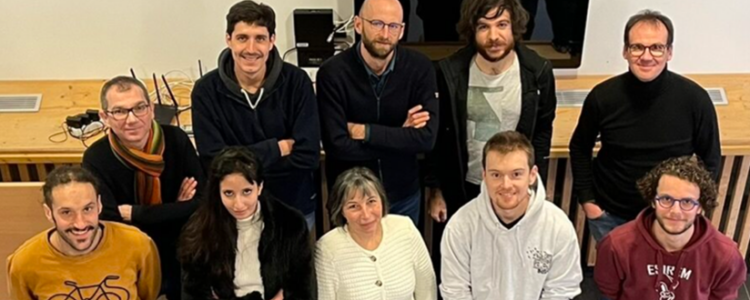Referent: Adrien Morel
Projects in this theme focus on the recovery, conversion and transmission of energy for powers ranging from µW to W.
Vibratory energy recovery
Our work focuses on the optimal recovery of vibratory energy from the media surrounding sensors and other low-power consumption devices, to make them fully energy autonomous and free from battery constraints. We combine the design of mechanical recuperators, based on the use of piezoelectric materials, with autonomous electrical circuits for optimal energy extraction and conditioning.
Automated test benches and examples of numerical results obtained from millions of simulations on supercomputers :
In particular, we seek to take advantage of the non-linearities of these systems, which can induce behaviors that are both fascinating from a scientific point of view and promising from an application point of view, for increased energy efficiency. Our research is based on analytical models, intensive numerical simulations using Python and Matlab on supercomputers and automated test benches.

Wireless power transmission
We are also working on innovative solutions for wireless power transmission: we are focusing on the use of very low-frequency magnetic fields to power systems through conductive walls, in harsh environments, or for biomedical applications. Our research focuses on the development of innovative, compact, non-linear electromechanical receivers, as well as the associated power electronics solutions that manage multiple receivers in a granular way to simultaneously transmit information and energy between a transmitter and a receiver.
Overview of an electrodynamic wireless energy transfer system and examples of prototypes :
Energy management in a renewable energy system
The main objective of this topic is to develop an intelligent hierarchical strategy for real-time energy management within a microgrid based on renewable energies with energy storage and electric vehicles (electric bicycles). Various methods are envisaged in this research, such as fuzzy logic and particle swarm optimization, among others. To validate these approaches, the scenarios studied are tested using a demonstrator. This consists of a charging station dedicated to connected electric bicycles, powered either by renewable energy sources, stationary batteries, or directly by the vehicles themselves.
Microgrid with real-time energy management and control strategy :
Thermal energy recovery
The other source of ambient energy we're looking to exploit is heat. We are working on the design of thermoelectric micro-generators based on the Stirling thermodynamic cycle. This approach is proving promising, not only in terms of theoretical efficiency (which can reach Carnot levels), but also in terms of future development possibilities and technical improvements. In collaboration with the University of Sherbrooke and FEMTO-ST, we have proposed an innovative concept for a Stirling micromotor. It is designed to be manufactured using advanced mini and microsystem technologies. With a volume of between 0.1 and 10 cm³ and an efficiency of the order of 25% of the theoretical Carnot efficiency, this micromotor is designed to operate with heat sources capable of producing temperatures ranging from 50 to 300°C.
Equivalent electrical model of the micromotor; CAD exploded view; central insulating element; and instrumented micromotor diaphragms:

